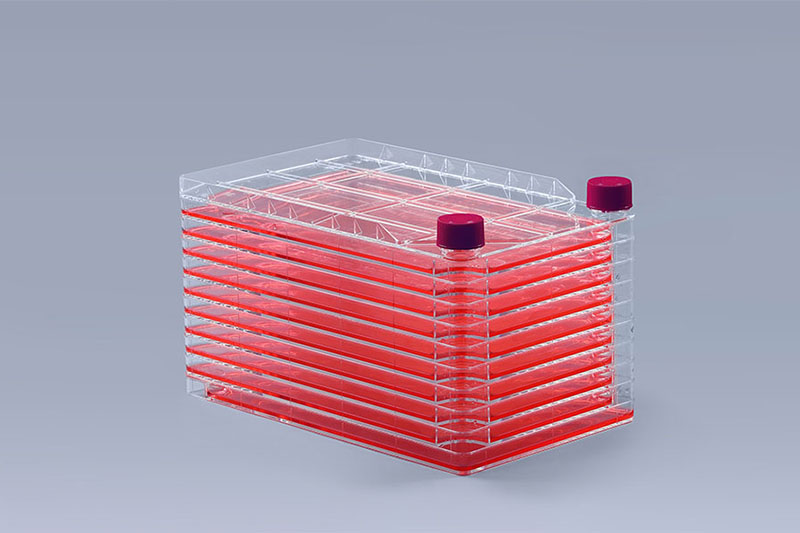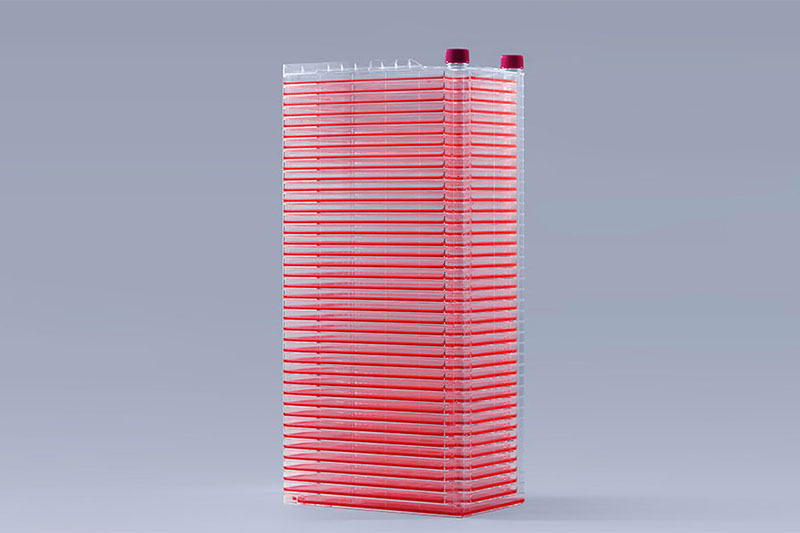Presumably, when researchers are cultivating cells, what they are most afraid of is that the cells that have been cultivated so hard are polluted. Today, FuDau would like to share with you in detail the symptoms of mycoplasma contamination in the cell factory if we are using it.
First briefly introduce mycoplasma, which is a microorganism with a minimum diameter of 0.2um and can live independently. Its size is between viruses and bacteria. . Since its minimum diameter is about 0.2um, it is comparable to the pores of mainstream filter membranes in the market, so it has a probability of passing through the filter, and it feels hard to guard against.
If the cell factory is contaminated by mycoplasma when cultivating cells, it can be found that its morphology is variable when observed under an inverted microscope, and most of them are adsorbed or scattered on the cell surface and between cells. The cross-section is similar to cellular microvilli, but the electron density of microvilli is less than that of mycoplasma, and there is no granule group or central bundle in the center.
Moreover, the metabolism of mycoplasma pollution mainly relies on sterols, and some species require arginine, O2 or glucose. Each mycoplasma has its own characteristics, and most mycoplasmas are suitable for survival under alkaline conditions (PH7.6-8.0), and have poor tolerance to acid. Sensitive to heat, insensitive to general antibiotics.
After mycoplasma contaminates cells in cell culture consumables such as cell factories, the culture medium in cell factories may not appear turbid. And in most cases, the cell changes are relatively slight and insignificant. Even if there is a slight change in the cells in the cell factory, it will be alleviated by passage and medium replacement, so it is easy to be ignored. However, in severe cases, the cells may proliferate slowly and even fall off from the culture vessel.
This is what FuDau shared with you in detail if we are using the symptoms of mycoplasma contamination in the cell factory.
The FAI climbed 5.9 percent year-on-year in the first 11 months of 2018, quickening from the 5.7-percent growth in Jan-Oct, the National Bureau of Statistics (NBS) said Friday in an online statement.
The key indicator of investment, dubbed a major growth driver, hit the bottom in August and has since started to rebound steadily.
In the face of emerging economic challenges home and abroad, China has stepped up efforts to stabilize investment, in particular rolling out measures to motivate private investors and channel funds into infrastructure.
Friday's data showed private investment, accounting for more than 60 percent of the total FAI, expanded by a brisk 8.7 percent.
NBS spokesperson Mao Shengyong said funds into weak economic links registered rapid increases as investment in environmental protection and agriculture jumped 42 percent and 12.5 percent respectively, much faster than the average.
In breakdown, investment in high-tech and equipment manufacturing remained vigorous with 16.1-percent and 11.6-percent increases respectively in the first 11 months. Infrastructure investment gained 3.7 percent, staying flat. Investment in property development rose 9.7 percent, also unchanged.
 English
English




















































